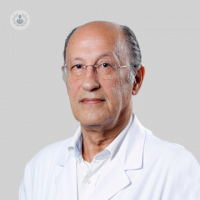Strabismus surgery can achieve a final solution
Written by:What is strabismus surgery?
Strabismus is a loss of the parallelism of the eyes or the ability to move in a coordinated way in the different directions. For this to happen, the set of muscles that move the eyes, six in each, must have a balance in their forces; both in the active forces, which are the ones that move the eyes, as in the passive forces, which are the ones that oppose this movement. If the balance is adequate, the eyes move in a coordinated way and maintain the position that is intended to reach. If this balance of strength is not adequate or there is a loss of parallelism or defect in the movement of the ocular rotation, the surgery of the strabismus returns to the set of ocular muscles the balance of forces both active and passive, so that the parallelism recovers and coordination of movement in all directions.
Can both eyes be operated at the same time?
Yes, you can operate both eyes at once and in fact most of the time should be so. The research we have developed at this center has consisted of an individual analysis of each of the eye muscles to know if one or more muscles of one eye or two should be operated. This diagnosis that is made at the time of the intervention is basic to achieve the balance of forces.
What type of anesthesia will be used?
The anesthesia we use for strabismus surgery should always be general anesthesia, using muscle relaxants. What we must do before and during the intervention is a diagnosis of the alterations, the elasticity and the muscular length. This research can only be done if the patient is with adequate muscle relaxation, and this can only be achieved through general anesthesia.
Does the expected result imply a definitive solution?
The definitive solution will be reached progressively. Strabismus, especially the infantile one, is a process that is affected by the maturation. So that from the birth or the first months of life that the first cases of strabismus appear, physical and all kinds changes in the organism that cause the ocular musculature and the eyeballs to change. So, surgery performed at six or eight months of age may require further action later on because of the physical changes that will occur. The basic objective is to always keep your eyes aligned and coordinated in your movements and when new components of imbalance appear, they can be rectified in time. Critical age groups in which variations that need treatment may appear are: between zero and nine years for a basic treatment; between fifteen and twenty years, stage of the adolescence very characteristic of some changes; and the stage of the thirty-five to forty years, with the onset of presbyopia.
What risks are there in surgery?
In strabismus surgery there are very few risks when it is performed by an expert who has reached an adequate diagnosis and who knows how to implement that diagnosis with the interoperative tests. The risks of infection are banal, usually corrected with post-operative treatment. More complex risks would come basically from a defect in the suture, which is known as slipped muscle or lost muscle, is a disinsertion of the newly intervened muscle and therefore a situation of paralysis that needs to be replenished as quickly as possible.
When can normal activities be resumed after surgery?
Recovery from normal activity depends a lot on age, young children recover much faster than adults. In general, in children between six months and four years, at twenty-four hours are normal; the adults take two to three days and can sometimes last up to a week, everything depends obviously on the normal activity that the person performs and the demands they have. Although the eyes may be red, the discomfort has disappeared at twenty-four or forty-eight hours, which does not prevent normal activities, except for the aesthetic appearance of the redness of the surgery.



